GigaTech Products Direct Attach Cables
DAC
GigaTech Products provides high quality DAC for network, server, and storage systems. These cables are specifically coded to be 100% compatible with the original manufacturer hardware. Each product is subject to in depth qualification and testing to ensure that it will perform to the demands of rigorous technology environments. All items are manufactured using the highest quality components and covered by a Lifetime Warranty.
-
Flexibility & Options
• 10G/25G/40G/100g Solutions
• Active and Passive options
• Breakout Capabilities -
Cost Advantage
• Less expensive than using separate transceivers & fiber cables
• Lower power consumption
-
Plug & Play Simplicity
• Single component
• No maintenance required before use
• Hot-pluggable footprint -
Factory Terminated
• Terminated and tested for 100% compatibility
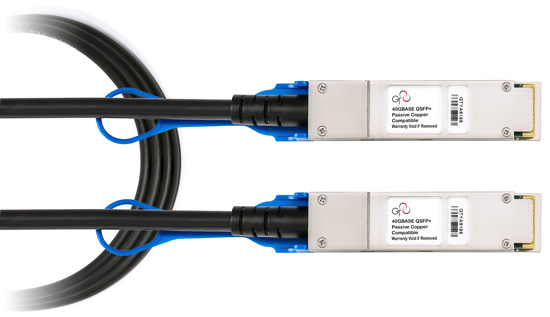
QSFP28
• Up to 100 GB bi-directional data links
• Hot-pluggable footprint
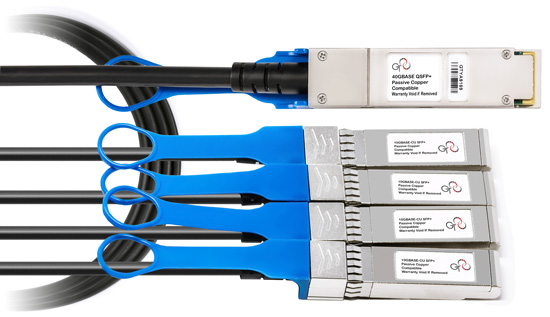
QSFP28 Breakout
• Up to 4 independent 25Gb channels
• Hot-pluggable footprint

QSFP+
• Up to 40 GB bi-directional data links
• Active & Passive Options
• Hot-pluggable footprint

QSFP+ Breakout
• Up to 4 independent 10Gb channels
• Hot-pluggable footprint
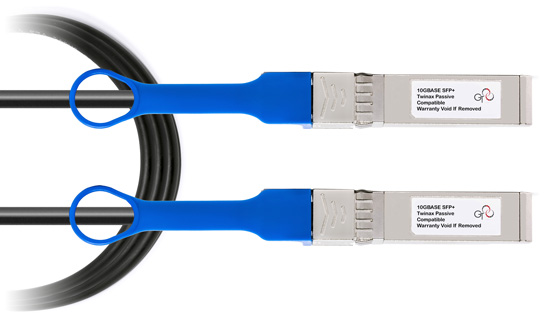
SFP28
• Up to 25 GB bi-directional data links
• Hot-pluggable footprint

SFP+
• Up to 10 GB bi-directional data links
• Active and Passive options
• Hot-pluggable footprint
Compatible Manufacturers
| Cisco | Arista | Dell/EMC | Extreme | HP | Juniper | Mellanox | Palo Alto |
| Adtran | Alcatel | Allied Telesis | Avaya | Brocade | Calix | Ciena | Edge-Core |
| Ericsson | F5 | Fortinet | Gigamon | Huawei | IBM | Intel | Lenovo |
| NetApp | Netgear | Nokia | Oracle | QLogic | Ruckus | Ubiquiti | Zyxel |
and many, many more!
Application of DAC Cables in Network Connections
DAC are used for directly connecting ports between active equipment such as switches, routers, servers and storage devices. When considering the use of direct attach cabling for a particular cabling infrastructure application, one must weigh the advantages and disadvantages as well as understand where they fit in your network infrastructure.
Transmission Distance: DAC cables can only be used where the physical distance between the ports is small and the maximum distance a signal can be transmitted via a DAC cable changes depending on the data rate. As data rates get higher, from 10G to 40G and then to 100G, the maximum length gets smaller. SFP+ 10G and QSFP+ 40G DAC can transmit up to 10M while SFP28 25G and QSFP28 100G DAC can only transmit up to 5m. These distance limitations mean that the most common use of DAC cables is connecting equipment located within the same data rack or adjacent racks.
Cost: Using a DAC cable will always be more cost effective than using two optical transceivers and a fiber cable. A DAC does not utilize a laser, which is the most expensive component in a transceiver. Also, copper wiring is less expensive than fiber wiring. By removing the laser and utilizing copper, deploying a large amounts of DAC cables in your network infrastructure can lead to a considerable cost saving.
Reliability: Because DAC are factory terminated they are less susceptible to installation errors. This provides consistent and expected transmission performance levels for the channel.
Top of Rack Deployment
Passive or active DACs are ideal for shorter ToR or rack-to-rack runs with cost-conscious budgets. DAC provides a lower initial investment than traditional transceiver to fiber to transceiver or Active Optical Cable solutions and will utilize less power, saving money over long periods of time.
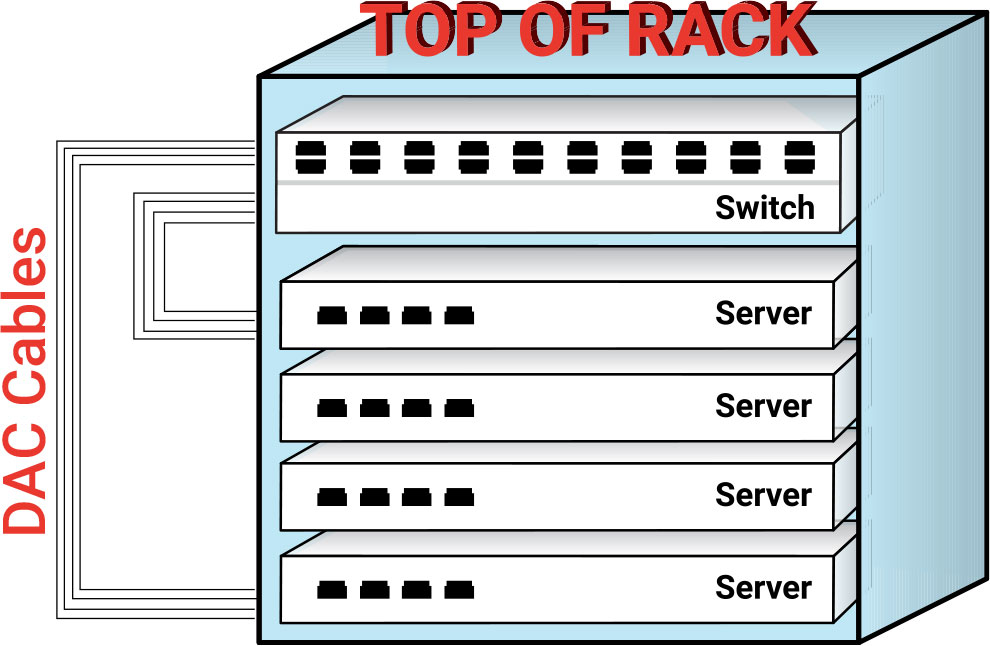
Middle of Row Deployment
At higher Ethernet speeds where the cabling costs are outsized, there is sense to placing the switch in the middle of rack to decrease the length of cable runs. DACs may be a perfect solution in this application, where maximum runs are 10m or less.
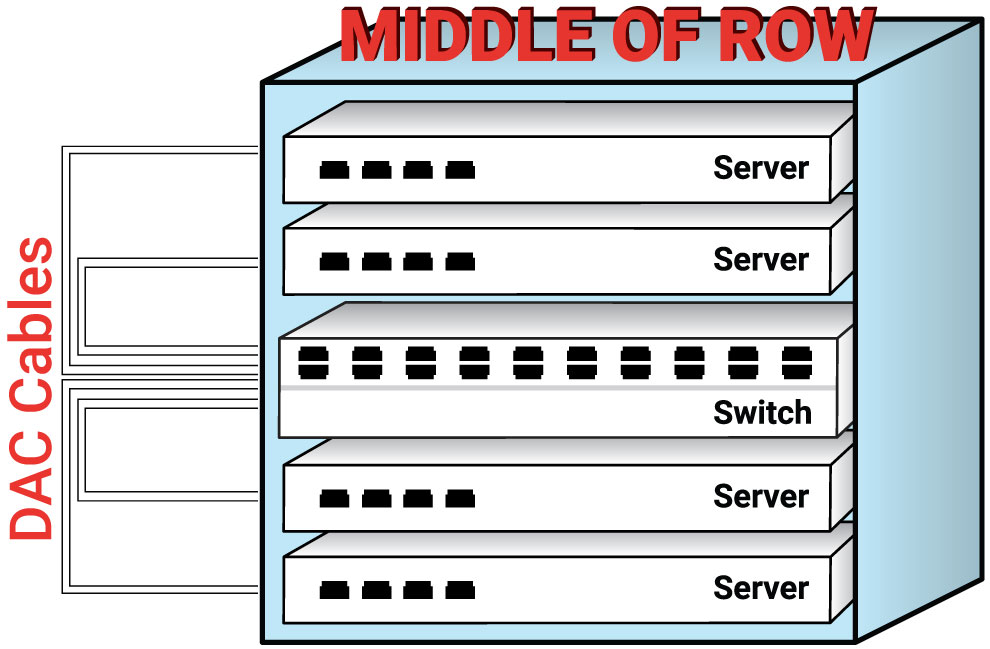
Customizable Options For Unique Networks
Standard and Non-Standard Lengths: Not all networks are built the same. While most OEMs offer standard lengths of 1M, 3M, and 5M, these do not always meet the requirements for a neat and clean data center environment. GigaTech stocks all common lengths as well as a number of unique lengths. These can also be built in customized lengths to the inch for the most discerning requirement.
Dual-Coding Options: Connecting two different manufacturer’s systems together can be complicated.Cisco coded DAC will not work properly when connected to an Arista switch. Juniper coded DAC will not be recognized in an HP server. GigaTech can code each DAC connection to allow for mixed OEM environments.
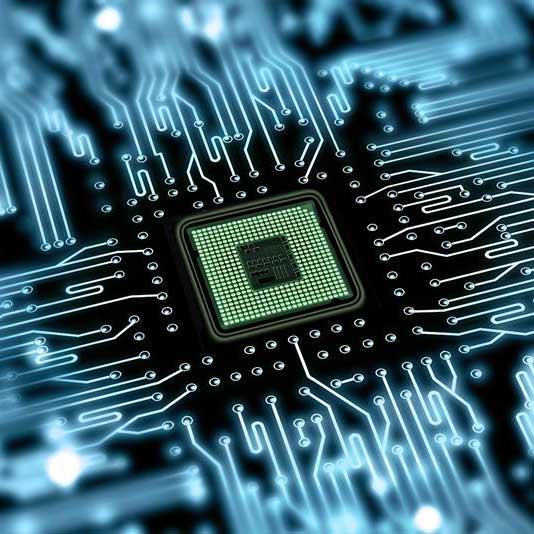
Never Sourced. Never Recycled.
All components in GigaTech Product optics are manufactured under the same roof and represent the gold standard for reliability and consistency in performance. This vertical manufacture chain allows GigaTech to avoid unnecessary variances in transceiver casing or laser quality often found with online resellers who source their components from an ever changing vendor list. The transceiver is guaranteed to be built from A-Stock never used components overseen by GigaTech Products,
Rigorous Testing & Standards Compliance
The quality and standards of our hardware is one the base foundations of GigaTech Products. All of our components comply with MSA (Multi-Source Agreement) output standards and, in many cases, excel beyond those certification standards. Every transceiver we produce is tested on active network devices to ensure they comply with OEM equipment and are verified to be plug-and-play and do not require work arounds.
